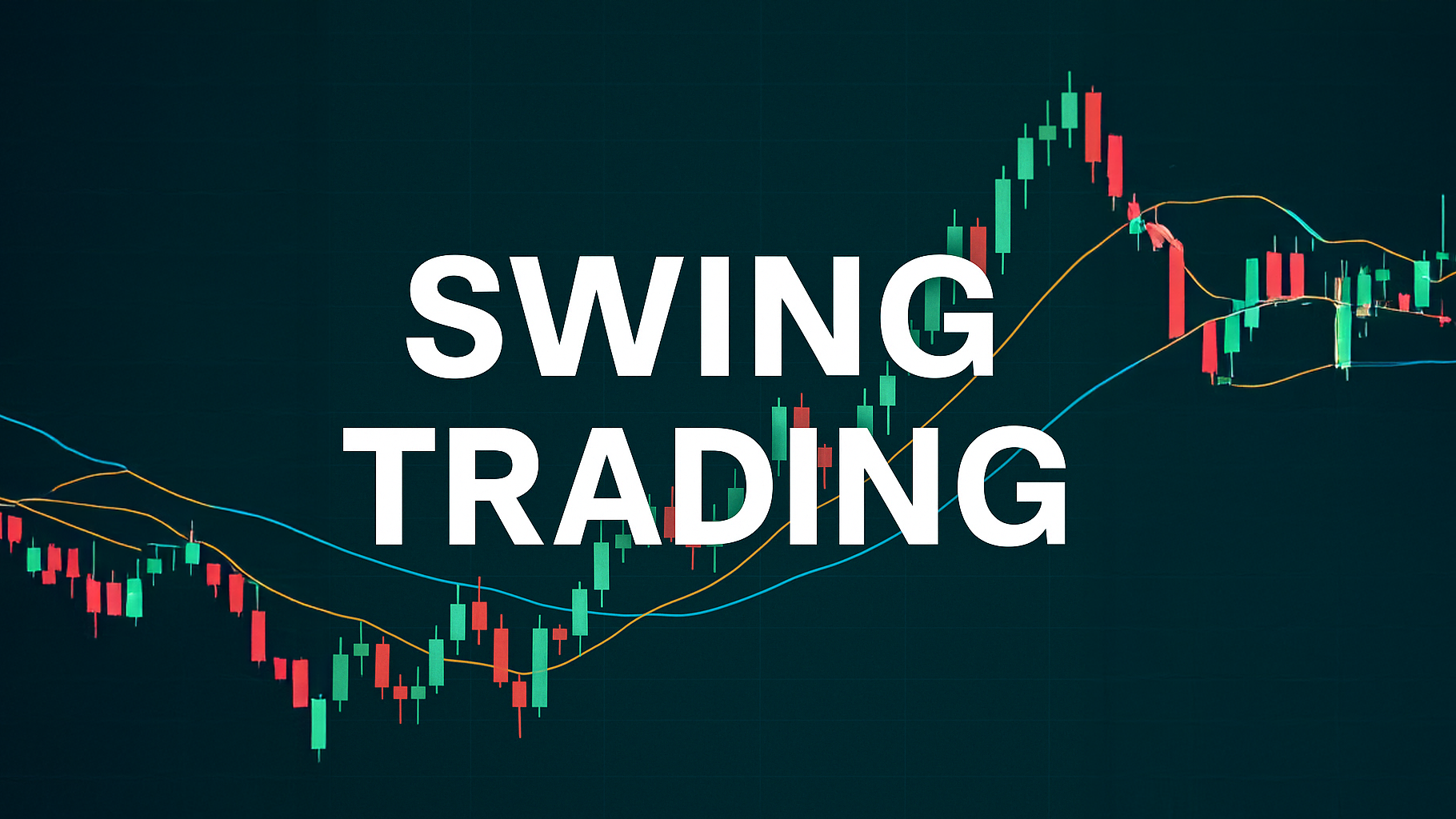Learn how to effectively draw trendlines in trading to identify market trends, manage risk, and improve your decision-making.
Trendlines are a key component for traders in stocks, forex, and cryptocurrency markets. They help identify trends, manage risk, and time entries or exits. Here's how to draw them effectively:
-
Step 1: Identify Swing Points
Spot major highs and lows where price reversals occur. Look for clear peaks or troughs with strong volume. -
Step 2: Connect Points
- For uptrends: Link higher lows using wicks, avoiding candle bodies.
- For downtrends: Connect lower highs with a clean line.
-
Step 3: Validate Trendlines
Ensure the line touches at least three points, shows consistent slope, and aligns with volume changes.
Avoid Common Mistakes:
Don’t force lines to fit your bias, ignore multiple timeframes, or act on breakouts without confirmation. Use the LuxAlgo platform for automated trendline detection and enhanced accuracy.
Trendlines work best when combined with other indicators like RSI or moving averages for stronger signals. Follow these steps to simplify your trading decisions and improve outcomes.
How To Draw Trendlines Like A Pro
How to Draw Trendlines: 3 Steps
Drawing trendlines effectively involves precision and a clear approach. Here's how to create trendlines that can help guide your trading decisions.

1. Identify Key Swing Points
Start by spotting major swing points – these are clear highs and lows where price reversals occur. Look for:
- Strong reversal candlestick patterns
- Higher-than-average trading volume
- Noticeable peaks or troughs that stand out on the chart
These pivots often mark areas where price changes direction, especially when confirmed by volume[1][6].
2. Connect the Points
After identifying the swing points, draw your trendline by connecting them. Follow these steps:
For uptrends:
- Link higher lows in succession.
- Avoid cutting through candle bodies.
- Use the candlestick wicks for precise alignment.
For downtrends:
- Connect consecutive lower highs.
- Ensure the line stays clean and doesn’t pass through price action.
- Extend the line beyond the latest price movements.
For example, on the S&P 500 index's weekly chart, connecting the lows from March 2020 to October 2020 resulted in an uptrend line that later acted as a support level[8][3].
3. Validate Your Trendline
Check the accuracy of your trendline using the following criteria:
| Validation Method | What to Look For |
|---|---|
| Price Touches | At least three points where the price interacts with the line |
| Volume Confirmation | Higher trading activity near the trendline |
| Time Duration | Lines lasting several months tend to be more reliable |
| Angle Stability | A consistent slope without frequent adjustments |
Tesla (TSLA) daily charts provide a good example, showing how the price respects trendlines during volume-backed tests[2][9]. Using multiple timeframes, such as daily and weekly charts, can further confirm the trendline's reliability. This approach aligns with advanced techniques found in Pro Trendline Methods[2][9].
Top Trendline Drawing Mistakes
Even when trendlines are properly validated, certain errors can still lead to poor outcomes:
Forcing Lines to Fit
A common error is adjusting trendlines to match a trader's expectations. This approach often results in unreliable signals and misguided decisions. Here's how to address these issues:
| Mistake | Fix |
|---|---|
| Ignoring price wicks | Factor in significant wicks during analysis |
| Drawing through price bodies | Focus on connecting key swing points |
| Constantly adjusting angles | Allow patterns to form naturally |
Forcing trendlines can undermine their accuracy. Instead, let them evolve naturally and reassess as new price data becomes available[2].
Overlooking Multiple Timeframes
Relying on just one timeframe limits your perspective and can lead to incomplete analysis. To get a clearer picture:
- Use higher timeframes (weekly/daily) to spot major trends.
- Check intermediate timeframes (like 4-hour charts) for confirmation.
- Look at lower timeframes (e.g., 1-hour or 15-minute) for precise entry points.
- Ensure all timeframes align to strengthen your analysis[4].
This multi-timeframe approach helps filter out false signals, as larger timeframes often highlight dominant trends that overshadow short-term movements[2][4].
Ignoring Breakout Confirmation
Entering trades too early during a breakout is another frequent mistake. To validate breakouts effectively:
- Look for a closing price beyond the trendline, not just wicks.
- Watch for a noticeable increase in volume.
- Confirm with a retest of the broken trendline.
- Ensure there’s sustained momentum[3].
For better accuracy, combine trendline analysis with other tools like volume indicators or RSI divergence. Overlooking these can lead to premature or false signals[2][4].
Pro Trendline Methods
Multiple Timeframe Analysis
To trade effectively with trendlines, it's crucial to analyze multiple timeframes. Start by looking at higher timeframes to identify the overall trend. Then, shift to lower timeframes to pinpoint specific entry opportunities. By aligning trendlines across different timeframes, you can draw them more accurately and improve their reliability[6]. This approach also enhances risk management by confirming trends more thoroughly. Once mastered, this method naturally transitions into the next important skill: trading trendline breaks.
Trading Line Breaks
Breakouts from trendlines can present strong trading opportunities when verified correctly. Pay attention to these two key confirmation techniques:
-
Price Action Validation: Wait for a clear candle close beyond the trendline. Tools like the LuxAlgo Price Action Concepts toolkit (discussed later) can automate this process.
-
Retest Strategy: Look for the price to retest the broken trendline, which often turns into a new support or resistance level. This method typically offers better risk-reward setups and helps with precise stop-loss placement[2].
Adding Technical Indicators
Pairing trendlines with technical indicators can strengthen trade signals and provide additional confirmation of trend strength. Here are some effective combinations:
| Indicator | Application | Benefits |
|---|---|---|
| RSI | Draw trendlines directly on RSI charts | Highlights hidden divergences |
| MACD | Use alongside price trendlines | Confirms trend momentum |
| 50-day MA | Acts as dynamic support/resistance | Validates trendline breakouts |
The 50-day moving average is especially useful when paired with trendlines to confirm trades[10]. These combinations work well with automated solutions like the LuxAlgo Oscillator Matrix toolkit, which can detect divergences in real time, complementing traditional trendline strategies.
"Combining trendlines with momentum indicators improves confirmation and reduces false signals."
Trendline Drawing Tools
Specialized solutions can make identifying and using trendlines faster and more efficient. Modern systems simplify the process by automating pattern detection, saving time and improving accuracy.
LuxAlgo Price Action Concepts Toolkit
LuxAlgo offers an automated system for spotting trendlines, making it easier for traders to identify market patterns. Here are its main features:
| Feature | Benefit |
|---|---|
| Auto-Detection | Cuts down on manual charting work |
| Dynamic Adjustment | Keeps data relevant in real time |
| Multi-Timeframe Analysis | Offers a broader market view |
| Custom Alerts | Helps traders act at the right time |
Using advanced algorithms, the LuxAlgo platform scans price data across various timeframes while still allowing traders to tweak settings to fit their needs[1].
Why Use Automated Analysis?
Automated solutions bring multiple advantages to traders, including:
- Saving Time: Analyze several assets at once, cutting down on how long it takes to review charts[2].
- Consistency: Apply the same rules to every chart, removing emotional decision-making.
- Improved Accuracy: Spot subtle trends that might be missed manually using advanced detection methods.
These solutions, combined with features like multi-chart analysis and synchronized timeframes, make LuxAlgo a strong choice for traders seeking efficiency[2].
How to Integrate the Tools
To start using these solutions, you'll need to follow a few steps for setup and customization:
-
Account Setup
Install the solution through its marketplace and activate its key features. -
Platform Connection
Use TradingView's built-in extension system to link the solution to your account. -
Customization
Adjust detection settings based on your preferred market conditions using presets.
This integration allows traders to leverage multi-timeframe analysis while staying flexible enough to adapt to changing market conditions[1][4].
Conclusion
Main Points
Trendlines work best when they connect key swing points that have been tested multiple times by price movements[3][5]. To draw them effectively, you can follow the three-step identification process and take advantage of modern solutions to refine your analysis[1][7].
A critical part of the process is analyzing multiple timeframes. Looking at both long-term and short-term charts helps traders spot broader trends and pinpoint precise entry points. These methods align with the principles covered in the 3-Step Drawing Process.
Success Tips
Here are some strategies to improve your trendline trading:
| Key Execution Phase | Tips for Implementation |
|---|---|
| Analysis Approach | Use multiple timeframes and confirm clear breakouts |
| Line Validation | Ensure at least two swing points align naturally |
| Tool Integration | Combine manual techniques with automated solutions |
To improve outcomes, pair trendlines with sound risk management. Use them to define stop-loss points and profit targets. By following these tested methods, from drawing to confirmation, traders can apply the strategies in this guide with more accuracy and confidence.
FAQs
How do you draw trendlines accurately?
To draw trendlines, start by identifying at least two swing lows for an uptrend or swing highs for a downtrend. Connect the wicks of these points without cutting through the candles. For a trendline to be considered valid, it should have three touches, as explained in Check Line Accuracy [3].
| Trend Direction | Connection Points | Function |
|---|---|---|
| Uptrend | Swing Lows | Acts as support and signals entry points |
| Downtrend | Swing Highs | Serves as resistance and indicates exit points |
For better results, combine trendline analysis with volume data. Avoid common mistakes outlined in Top Trendline Drawing Mistakes. Use solutions like LuxAlgo's Price Action Concepts toolkit (refer to Trendline Drawing Tools) to minimize subjectivity and maintain consistency across different timeframes. These methods align with platform integration strategies discussed in Trendline Drawing Tools [3][11].







